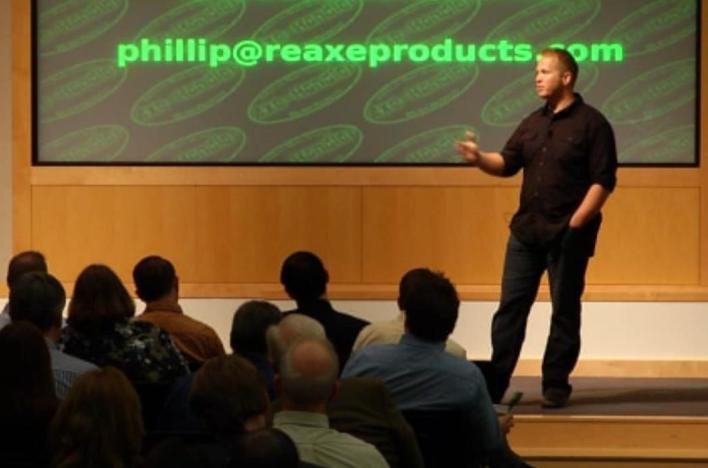This week’s 1 Million Cups at the Kauffman Foundation featured a pitch for Axe-Handler, a new portable guitar stand, and an update from Farmobile, a data collection platform for agriculture around the world.
The panel of guest questioners consisted of Alex Altomare, board president of the Lean Lab and a mentor with SparkLabKC and the Sprint Accelerator; Kevin Rooney, director of innovations at Dimensional Innovations; and Mike Meyer, manager at Meyer Music.
First up was Axe-Handler founder Phillip Chisholm, who made the case for his pocket-sized support stand for guitars and basses. He described it as simple, durable and “the best of its kind at holding a guitar of any kind on any surface.” Retailing for less than $20, the Axe-Handler is made in the United States and available at 60 independently owned music stores, as well as online.
Chisholm is also developing a more intricate onstage guitar stand called “the Arc” with the support of a “well-known musician,” he said. The company’s goals include increasing the number of independent music stores that offer the Axe-Handler and developing partnerships with guitar manufacturers in the $1 billion guitar industry.
Farmobile at 1 Million Cups
Farmobile founder Jason Tatge initially pitched his tractor-cab data aggregator for farmers in March at 1 Million Cups. He was back to give an update on the rapid growth of his company, which allows farmers to gather, store and, if they so desire, sell the data collected from their modern farm machinery.
If a farmer elects to sell his or her data that was “harvested” with Farmobile technology to a third party seeking agricultural knowledge for its own business, Farmobile splits the profit from the sale 50-50 with the farmer.
“We hope to use this data to make the whole globe smarter …” Tatge said. “How can we get more productivity out of those acres?”
Farmobile is currently gathering agricultural data on 103 farms via 248 devices that are collecting billions of messages daily. The company plans to have 5,000 data-gathering devices in place, covering 10 to 15 million acres in the United States and Canada, by March 2015.


